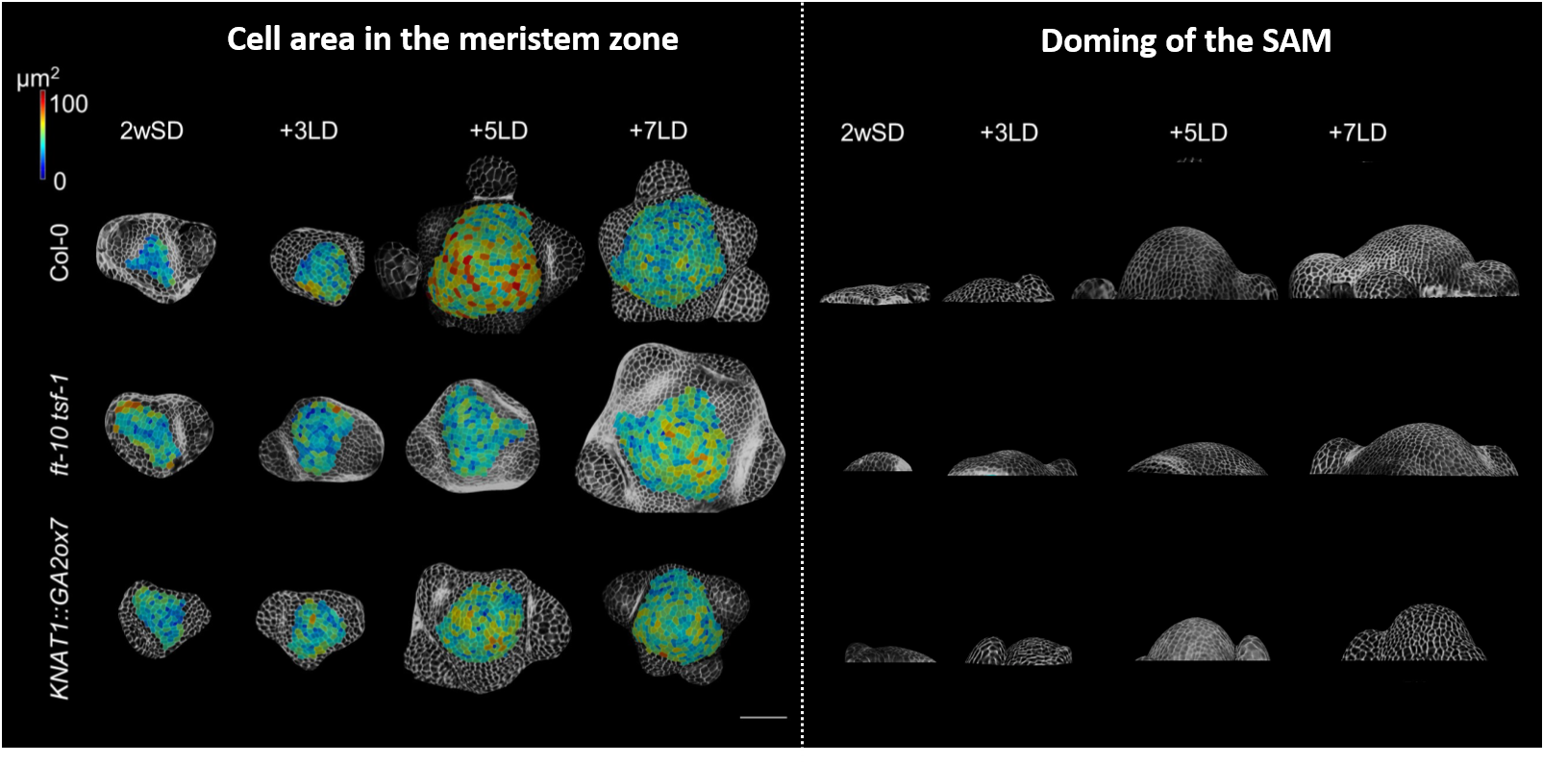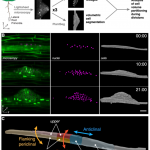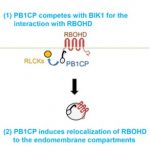Regulation of shoot meristem shape by photoperiodic signaling and phytohormones during floral induction of Arabidopsis (eLife)

Angiosperms synchronize the floral transition with optimal internal and external conditions such as daylength to maximize reproductive success. Despite the wealth of knowledge on the molecular mechanisms controlling flowering time, little is known about the cellular events that occur as the vegetative meristem converts into a reproductive meristem. Here, Kinoshita and coworkers combined confocal microscopy and live imaging techniques to define the morphological changes in the shoot apical meristem (SAM), which acquires a domed shape after transferring plants from short to long days. In wild-types plants, the SAM area enlarged rapidly upon induction due to increased number and size of meristematic cells. By contrast, plants carrying mutations in floral activators (ft tsf1) and in a gibberellic acid (GA) biosynthetic enzyme (ga20ox2-1) displayed a smaller SAM area and delayed doming, consistent with their late flowering phenotype. These findings indicated that both photoperiod and GA pathways contribute to alterations in SAM shape at the floral transition under LD. Two MADS transcription factors – previously described as components of the photoperiodic pathway – regulated the dynamic expression of a gene involved in GA catabolism by directly binding regulatory sequences in its promoter. Specifically, SOC1 negatively regulated GA2ox4 transcription in the SAM at the floral transition. Thus, seasonal cues and transient GA accumulation trigger cellular changes at the shoot apex underpinning the induction of flower development. (Summary and image adaptation by Michela Osnato @michela_osnato) eLife 10.7554/eLife.60661



